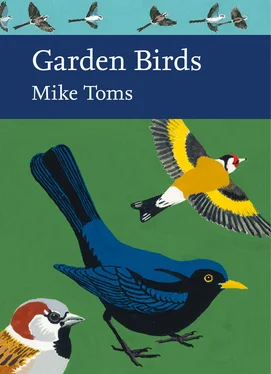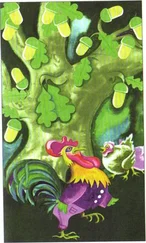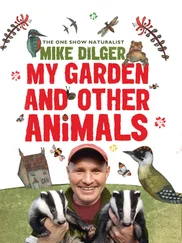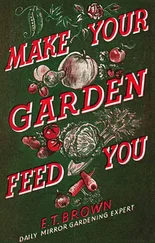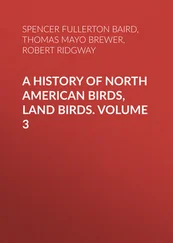
FIG 42. Male Blackbirds with access to supplementary food sing for longer than those without access to such food, suggesting that the food provided at garden feeding stations might help local birds in defence of their territories and mate attraction. (Mike Toms)
FOOD PROVISION AND MOVEMENTS
Birds tend to reduce the size of the area over which they forage when provisioned with supplementary food, something that can lead to a reduction in the size of breeding territory and even a change in mating system in the case of Dunnock (Davies & Lundberg, 1984). As we will see in a moment in relation to Blackcaps, the provision of food in gardens can have a significant impact on movement and wintering behaviour.
Although not garden-related, the scale of feeding impacts can be seen from work on the White Stork Ciconia ciconia, a species that was wholly migratory in Europe but which has established resident populations across parts of Iberia largely in response to the year-round food available at landfill sites (Gilbert et al., 2016). Landfills and food discarded by people have also played a role in the expansion of urban-breeding Lesser Black-backed Gulls Larus fuscus here in the UK (Coulson & Coulson, 2008), a species that now winters here in large numbers, when it formerly wintered in southern Europe and north and west Africa.
FOOD PROVISION AND THE EVOLUTION OF NEW BEHAVIOUR – WINTERING BLACKCAPS
The Blackcap is a common summer visitor to much of Britain, wintering in southern Europe and south into North Africa. Although there are occasional records, the Blackcap was rarely encountered in Britain during the winter months 60 years ago (Stafford, 1956). However, since the 1950s we have seen a rapid and substantial increase in wintering records, as information from both the Garden Bird Feeding Survey and Bird Atlas 2007–11 show (Balmer et al., 2013). Data from BTO-led bird atlases show that the Blackcap’s wintering range in the UK has expanded by 77 per cent over the last 30 years. The increase in wintering numbers has come about because Blackcaps breeding in southern Germany and Austria have increasingly migrated in a northwesterly direction to Britain for the winter, rather than in a southwesterly direction to traditional wintering areas located in southern Spain (Helbig et al., 1994). This new migration strategy has been shown to be genetically encoded (Berthold et al., 1992), and is maintained via reproductive isolation and assortative mating, linked to fitness benefits on the breeding grounds (Bearhop et al., 2005).

FIG 43. The use of gardens by Blackcaps peaks during the winter months. Data reproduced from BTO Garden BirdWatch with permission.
Early observations of increasing numbers of wintering Blackcaps coincided with the introduction of commercial bird foods (Callahan, 2014), suggesting that supplementary feeding at garden feeding stations might be applying a selection pressure for the evolution of this new migratory route. Interestingly, while the Blackcaps wintering in southern Spain are predominantly frugivorous in their dietary choices, those wintering in Britain are known to use a wide variety of supplementary food types (Tellería et al., 2013; Plummer et al., 2015). The availability of supplementary food is unlikely to be the sole driver of evolutionary change, however, and it is likely that a changing climate has also had some influence over the adoption of this new migration route and new wintering area. Winter conditions in Britain, and more widely across the Northern Hemisphere, are becoming milder, something that has enabled a number of species to shift their wintering range northwards (IPCC, 2013).
Unravelling these different drivers requires access to long-term datasets on food provision, Blackcap occurrence and climatic factors. Fortunately, BTO researchers have been able to use data from BTO’s weekly Garden BirdWatch survey to explore the question of whether food provision has played a part in the evolution of a new migratory strategy in this central European Blackcap population (Plummer et al., 2015). Earlier work using the BTO Garden BirdWatch dataset has revealed that Blackcaps are strongly associated with suburban gardens during the winter months (Chamberlain et al., 2004a) which makes this dataset ideal for examining the interactions between food provision and Blackcap wintering behaviour. Examination of the foods provided in Garden BirdWatch gardens and their use by wintering Blackcaps revealed a strong preference by the birds for sunflower hearts and fat-based products. By calculating an annual measure of the proportion of winter weeks in which these foodstuffs were provided at each of 3,806 sites – each of which had a minimum of at least 16 weekly submissions in a minimum of at least nine winters – it has been possible to explore the relationship between Blackcap occurrence and food provision and how this has changed over time.
Wintering Blackcaps showed regional variation in their use of Garden BirdWatch gardens, with greater occupancy of sites in the south and west (see Figure 43), where wintering conditions are milder. Occupancy rates were influenced by both the provision of supplementary food and winter temperature. Birds were recorded more often in gardens that provided food more frequently, and showed a preference for sites that had a warmer local climate during the winter months. One of the most interesting findings was that Blackcap occurrence has become more strongly associated with the provision of fat products and sunflower hearts over time, suggesting that the birds are adapting their feeding habits to exploit human-provisioned foods. This supports the theory of Berthold & Terrill (1988) that the Blackcap’s new migration strategy is likely to have evolved in response to increased supplementary feeding activities in gardens in Britain.
The results of the Plummer study also reveal that gardens are used less during milder winters, which – together with the relationship found with local climate – supports the hypothesis that an improving winter climate is likely to have enabled the Blackcap to increase its wintering range into Britain. In addition, the growing use of provisioned food adds further support to the work of Rolshausen et al. (2009), who have found that Blackcaps wintering in Britain have relatively narrower and longer beaks than those wintering in Spain. Such differences suggest that these British migrants have adapted to a more generalist diet than their Spanish counterparts, adding phenotypical divergence to the genetic divergence already documented between these two populations (Berthold et al., 1992). Rolshausen et al. also found differences in wing morphology, bill colour and plumage colour between the two populations.
WATER AND GARDEN BIRDS
Garden birds require water, both to drink and in many cases for bathing – though see Chapter 5
. This water may be present in the form of a pond, puddle or bird bath and all can be well used by visiting birds. Figures from national studies suggest that 10 per cent of UK dwellings have a pond associated with them, though not all of these will be suitable for birds. Some may be netted to protect precious fish, while others may be steep-sided and inaccessible. Those with a shallow end or with branches that dip into the water are likely to be used most often, the birds able to perch within or close to the water when drinking or bathing. Just over half of the respondents to a questionnaire survey carried out by Cowie & Hinsley (1988a) in suburban Cardiff reported providing water for visiting birds. The provision of water can influence the community of birds using a garden, with seed-eating species seemingly preferring sites at which they can both feed and drink. Water may also shape behaviour – for example, by providing some garden Blackbirds with the opportunity to develop the habit of catching and eating small newts and the tadpoles of Common Frog Rana temporaria – and play a role in disease transmission. Despite this, its importance has received little research interest and there is the potential here for much new information to be gained.
Читать дальше
